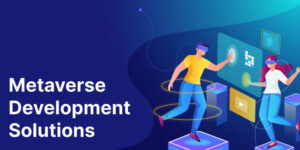
Blockchain Platforms technology has rapidly gained momentum in recent years, with numerous platforms emerging to cater to different use cases. In 2025, the blockchain landscape is poised to become even more diverse and exciting, with new platforms offering innovative solutions to longstanding challenges.
Whether you’re a developer looking to build decentralized applications, a business seeking to streamline operations, or an investor looking to capitalize on the potential of blockchain, there’s a platform out there for you. In this article, we’ll look at some of the top blockchain platforms to consider in 2025, based on their technical capabilities, adoption rates, and overall potential for success.
From established players like Ethereum to up-and-coming platforms like Tezos, the blockchain ecosystem offers opportunities for those willing to explore and experiment. So let’s dive in and discover the top 10 blockchain platforms for 2025.
What is a blockchain platform?
A blockchain platform is a digital infrastructure that allows developers and businesses to build, deploy, and operate decentralized applications (dApps) using blockchain technology. At its core, a blockchain platform consists of a network of computers, or nodes, that work together to maintain a distributed ledger of transactions, with each node verifying and validating new blocks added to the chain.
The main advantage of a blockchain platform is that it enables the creation of trustless, transparent, and tamper-proof systems without the need for a central authority.
This is achieved through using cryptographic algorithms that ensure the integrity of the data stored on the blockchain and through consensus mechanisms that incentivize nodes to behave honestly and prevent attacks or manipulation.
Blockchain platforms can be used for various use cases, including payments, identity verification, supply chain management, etc. They offer high security, privacy, and immutability, which is particularly useful in industries requiring high trust and accountability.
A few of the essential elements of the top blockchain platforms include the following:
- Smart contracts: A blockchain platform can support the creation and execution of self-executing code that can automate complex business processes and enforce contractual agreements.
- Tokenization: A blockchain platform can enable the creation and management of digital assets, or tokens, representing anything from currencies and commodities to loyalty points and voting rights.
- Interoperability: A blockchain platform enables seamless communication and data exchange between blockchains and legacy systems, allowing for greater efficiency and interoperability.
Overall, a blockchain platform is a powerful tool that can enable developers and businesses to create innovative solutions that are secure, transparent, and decentralized. As technology evolves and matures, we expect to see even more exciting use cases and applications emerge, making blockchain a vital digital economy enabler.
How to select a blockchain for your business
Selecting the suitable blockchain for your business can be complex and challenging, as many factors must be considered.
Here are some steps you can follow to help you choose the best blockchain for your business:
1. Identify your business needs and goals: Before evaluating different blockchain platforms, you must clearly understand your business needs and goals. Are you looking to streamline operations, reduce costs, or improve customer engagement? Do you need a blockchain that can handle high volumes of transactions or support complex smart contracts? Defining your needs and goals will help you narrow your search and focus on the platforms best suited for your business.
2. Evaluate the technical capabilities of different blockchains: Once you have identified your business needs and goals, you can evaluate other blockchain platforms based on their technical abilities. Some key factors include the consensus mechanism, scalability, security, interoperability, and developer tools. It would help if you also considered the programming language used by the blockchain and whether it supports the development of the types of applications you need.
3. Consider the ecosystem and adoption: A blockchain is only as strong as its community and ecosystem. It would help if you considered the level of adoption and activity on the platform and the number and quality of third-party developers and projects. A vibrant ecosystem can provide access to various tools, services, and solutions to help you build and grow your business on the blockchain.
4. Evaluate the governance model: Governance is an essential aspect of any blockchain platform, as it determines who has the power to make decisions and enforce rules on the network. It would help if you evaluated the governance model of different blockchains to confirm that it aligns with your trade requirements. Some blockchains have a more decentralized governance model, while others are more centralized or hybrid.
5. Consider the regulatory environment: Depending on the nature of your business and the jurisdictions you operate in, consider the regulatory environment when selecting a blockchain platform. Some blockchains are more privacy-focused, while others are more transparent and compliant with regulatory requirements. It would help if you also considered the legal and regulatory risks associated with using a particular blockchain and any potential compliance costs.
Overall, selecting the suitable blockchain for your business needs a thorough assessment and review of diverse aspects. By following these steps and working with experienced blockchain consultants and developers, you can choose a platform that meets your needs and helps you achieve your business goals.
Here are some of the blockchain platforms
1. Tezos
Tezos is a top blockchain platform launched in 2018 to provide a more flexible and upgradeable alternative to existing blockchain platforms.
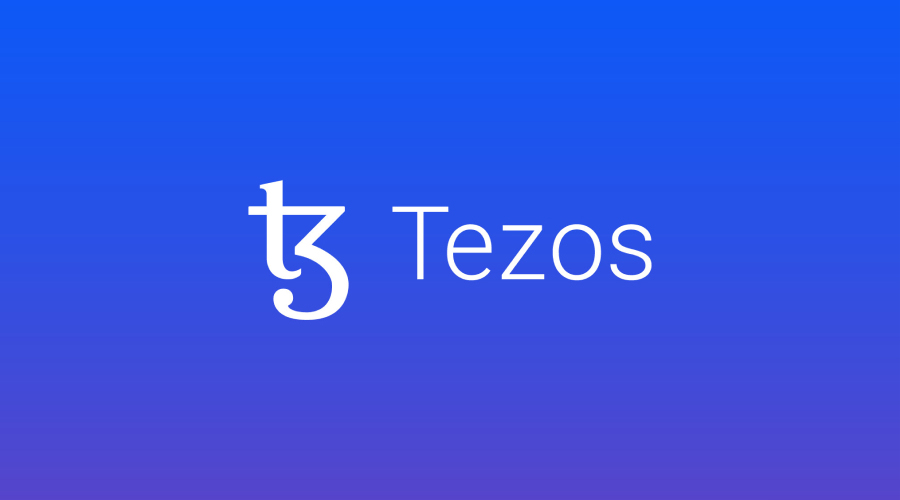
Here are a few of the essential elements of Tezos:
- On-chain governance: Tezos’s unique method permits token owners to poll on proposed protocol upgrades and changes. This ensures that the platform can evolve and adapt over time without the need for hard forks or contentious debates.
- Smart contracts: Tezos supports the creation and execution of smart contracts, which are self-executing programs that can automate a wide range of business processes and transactions.
- Formal verification: Tezos has built-in support for formal verification, a mathematical process that allows developers to ensure the correctness and security of their smart contracts before they are deployed.
- Low gas fees: Tezos employs a striking consensus mechanism called proof-of-stake, which is better fuel-efficient than conventional proof-of-work methods. This results in lower transaction fees and faster transaction times.
- Interoperability: Tezos is designed to be interoperable with other blockchain platforms and legacy systems, allowing for greater flexibility and efficiency.
- Tokenization: Tezos supports creating and managing digital assets, or tokens, representing anything from currencies and commodities to securities and voting rights.
- Community-driven: Tezos has a vibrant and active community of developers, enthusiasts, and stakeholders who are committed to the long-term success and growth of the platform.
- Robust architecture: Tezos has a modular and flexible architecture that makes it easier for developers to build and deploy applications on the platform. This also permits more effortless integration with current systems and technologies.
Tezos is a versatile and innovative blockchain platform offering various features and capabilities for developers, businesses, and investors. With its unique governance system, smart contract capabilities, and focus on flexibility and interoperability, Tezos is well-positioned to become a leading blockchain platform for decentralized applications and digital assets.
2. Hyperledger Fabric
Hyperledger Fabric is a permissioned blockchain medium that is designed for enterprise usage. It is one of the most popular blockchain platforms for businesses and organizations looking to build and deploy blockchain-based applications.

Here are a few of the essential elements of Hyperledger Fabric:
- Modular architecture: Hyperledger Fabric has a modular architecture that allows for greater flexibility and customization. This means developers can choose which components they want to use and build their custom blockchain applications.
- Private and permissioned: Hyperledger Fabric is a permissioned blockchain, which means that access to the network is restricted to authorized participants. This makes it more suitable for enterprise use, where privacy and confidentiality are important considerations.
- Smart contracts: Hyperledger Fabric supports the creation and execution of smart contracts, which can automate various business processes and transactions. It uses a chain code programming model, which lets designers pen smart contracts in famous programming languages like Java, Go, and JavaScript.
- High performance: Hyperledger Fabric is developed to be admiringly scalable and performant, handling a lot of dealings per moment. It achieves this using a unique concurrence instrument called Practical Byzantine Fault Tolerance (PBFT).
- Flexibility: Hyperledger Fabric is designed to be flexible and adaptable to various use cases and applications. It supports private, public, and hybrid deployments and interoperability with other blockchain platforms and legacy systems.
- Privacy and confidentiality: Hyperledger Fabric provides a range of privacy and confidentiality features, including creating private channels that allow for confidential transactions between specific participants.
- Enterprise-grade security: Hyperledger Fabric uses various security features and mechanisms to protect the network and its participants from malicious attacks and other security threats.
- Open source: Hyperledger Fabric is an open-source project, meaning anyone can contribute to its development and use it for free.
Hyperledger Fabric is an effective and one of the top blockchain platforms that deliver a spectrum of elements and powers for enterprise use. Its modular architecture, high performance, and focus on privacy and security make it well-suited for various applications and use cases.
3. Hyperledger Sawtooth
Hyperledger Sawtooth is an enterprise-level blockchain forum for building, deploying, and managing distributed ledger applications.
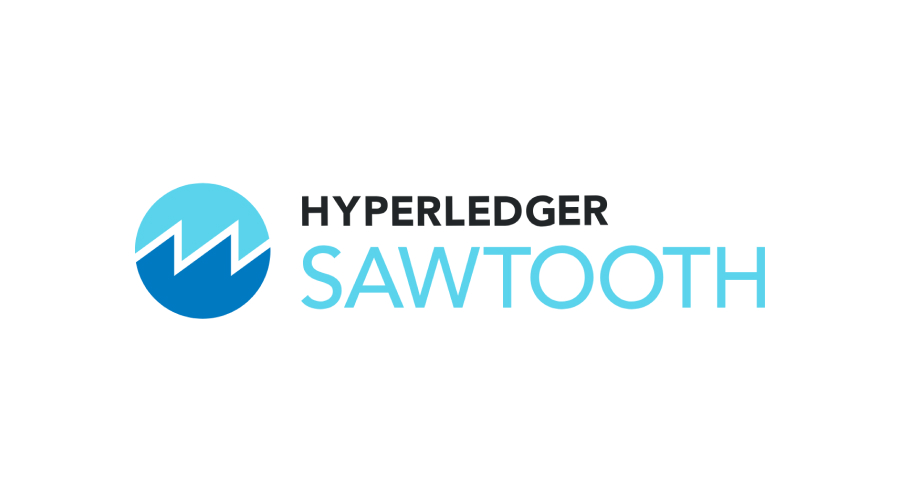
Here are a few of the essential elements of Hyperledger Sawtooth:
- Modular architecture: Hyperledger Sawtooth has a modular architecture allowing greater flexibility and customization. This means developers can choose which components they want to use and build their custom blockchain applications.
- Scalability: Hyperledger Sawtooth is designed to be highly scalable and performant, handling thousands of transactions per second. It achieves this using a distinctive concurrence instrument named Proof of Elapsed Time (PoET).
- Smart contracts: Hyperledger Sawtooth supports the creation and execution of smart contracts, which can automate a wide range of business processes and transactions. It uses a Transaction Family programming model, allowing creators to document smart contracts in famous programming languages like Python, JavaScript, and Rust.
- Privacy and confidentiality: Hyperledger Sawtooth provides a range of privacy and confidentiality features, including creating private networks and channels that allow for confidential transactions between specific participants.
- Easy deployment: Hyperledger Sawtooth is easy to deploy and manage, with the ability to run on a wide range of platforms and cloud environments.
- Permissioned network: Hyperledger Sawtooth is a permissioned blockchain, which means that access to the network is restricted to authorized participants. This makes it more suitable for enterprise use, where privacy and confidentiality are important considerations.
- Open source: Hyperledger Sawtooth is an open-source project, meaning anyone can contribute and use it for free.
Hyperledger Sawtooth is a top blockchain platform offering various enterprise-use features and capabilities. Its modular architecture, scalability, and focus on privacy and confidentiality make it well-suited for multiple applications and use cases.
4. Stellar
Stellar is an open-source, decentralized blockchain platform designed to facilitate the transfer of digital currencies and assets.

Here are a few of the essential elements of Stellar:
- Fast and low-cost transactions: Stellar is developed to be positively efficient and process thousands of dealings a second at a meager cost. This makes it perfect for micropayments and other low-value dealings.
- Customizable tokens: Stellar allows users to create custom tokens representing any asset, including currencies, commodities, and securities.
- Decentralized exchange: Stellar has a built-in decentralized exchange that allows users to trade tokens and assets directly on the blockchain without needing a centralized intermediary.
- Interoperability: Stellar is designed to be interoperable with other blockchain platforms and financial networks, which means that it can facilitate cross-border payments and different types of transactions.
- Focus on financial inclusion: Stellar is developed to be available to everyone, without regarding their economic standing or geographic location. It has a strong focus on financial inclusion and aims to provide low-cost, accessible financial services to people around the world.
- Easy integration: Stellar easily integrates with other systems and applications, thanks to its open-source architecture and robust API.
- Community-driven development: Stellar is an open-source project driven by a vibrant community of developers, users, and contributors. This means it constantly evolves and improves, regularly adding new features and functionality.
Stellar is one of the top blockchain platforms that offer a range of features and capabilities for facilitating the transfer of digital currencies and assets. With its focus on low-cost, fast transactions, customizability, and interoperability, it is well-suited for various applications and use cases, from cross-border payments to micropayments.
5. EOS
EOS is a blockchain medium that provides fast, scalable, and efficient decentralized applications (dApps).

Here are a few of the crucial elements of EOS:
- High performance: EOS is developed to be favorably performant, capable of processing many dealings in a second. It achieves this using a distinctive concurrence means called Delegated Proof of Stake (DPoS).
- Scalability: EOS is developed to be favorably scalable, supporting millions of users and dApps on a single network.
- Customizability: EOS allows developers to create custom dApps using a range of programming languages, including C++, Rust, and JavaScript.
- Low-cost transactions: EOS provides low-cost transactions, which makes it ideal for dApps that require frequent transactions.
- Governance model: EOS has a unique management standard that lets token owners cast votes for block producers liable for validating network transactions. This enables us to confirm that the network is secured and transparent.
- Easy development: EOS is easy to develop, thanks to its robust developer tools and resources, including a Software Development Kit (SDK), documentation, and community support.
- Interoperability: EOS is designed to be interoperable with other blockchain platforms and systems, which makes it easy to integrate with existing infrastructure.
- Decentralized storage: EOS provides decentralized storage solutions, which allow app developers to store data securely and transparently.
Overall, EOS is a flexible and one of the top blockchain platforms offering various features and capabilities for building fast, scalable, and efficient decentralized applications. Its high performance, scalability, customizability, and governance model are well-suited for multiple applications and use cases, from social media platforms to financial services.
6. Corda
Corda is an open-source, decentralized blockchain platform for business and financial applications.

Here are a few of the essential elements of Corda:
- Privacy: Corda is designed to provide a high degree of privacy and security, with the ability to restrict access to specific transaction data and maintain confidentiality.
- Smart contracts: Corda supports smart contracts, which are self-executing contracts that can automate the execution of complex business processes.
- Interoperability: Corda is designed to be interoperable with other blockchain platforms and financial networks, which makes it easy to integrate with existing infrastructure.
- Customizability: Corda allows developers to create custom applications utilizing various languages, such as Java and Kotlin.
- Regulatory compliance: Corda is designed to comply with regulatory requirements, with the ability to support legal and regulatory frameworks.
- Business-focused: Corda is specifically designed for business and financial applications, focusing on providing secure, efficient, and transparent solutions for complex business processes.
- Modular architecture: Corda’s modular architecture lets developers modify and expand the platform to complete their requirements efficiently.
- Community-driven development: Corda is an open-source project driven by a vibrant community of developers, users, and contributors. This means it constantly evolves and improves, regularly adding new features and functionality.
Corda is a powerful, flexible blockchain platform offering various features and capabilities for building secure, efficient, and transparent business and financial applications. Its focus on privacy, smart contracts, interoperability, customizability, regulatory compliance, and community-driven development is well-suited for many use cases and applications in the business and financial sectors.
7. Klaytn
Klaytn is a blockchain medium generated by Ground X, the blockchain associate of South Korean web giant Kakao.
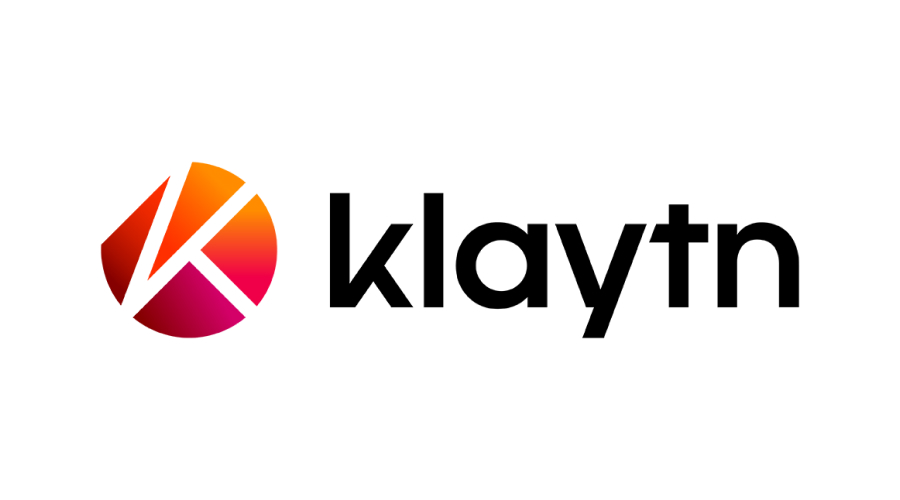
Here are a few of the essential elements of Klaytn:
- High performance: Klaytn is designed to be highly performant, able to process thousands of transactions per second. It uses a unique consensus mechanism called Proof of Contribution (PoC), which combines elements of Proof of Stake (PoS) and Proof of Work (PoW) to achieve fast transaction processing speeds.
- Scalability: Klaytn is designed to be highly scalable and support many users and dApps on a single network.
- Customizability: Klaytn provides developers with a range of tools and resources to create custom dApps using a variety of programming languages, including Solidity, Java, and JavaScript.
- Interoperability: Klaytn is designed to be interoperable with other blockchain platforms and systems, which makes it easy to integrate with existing infrastructure.
- Governance model: Klaytn has a unique governance model that allows token holders to vote for critical decision-makers responsible for managing the network and making decisions about its future development.
- Easy development: Klaytn is easy to develop, thanks to its robust developer tools and resources, including a Software Development Kit (SDK), documentation, and community support.
- Security: Klaytn is created to protect and resist attacks, with various steps to guard against phishing and other cyber threats.
- Business-focused: Klaytn is specifically designed for business and enterprise applications, focusing on providing secure, efficient, and scalable solutions for complex business processes.
Klaytn is one of the most influential blockchain platforms that offer a range of features and capabilities for building fast, secure, and scalable decentralized applications. With its high performance, scalability, customizability, governance model, and focus on business and enterprise applications, it is well-suited for various use cases and applications in multiple industries, including finance, healthcare, supply chain management, and more.
8. Tron
Tron is a blockchain-based platform that provides a decentralized, high-performance infrastructure for building and deploying dApps.
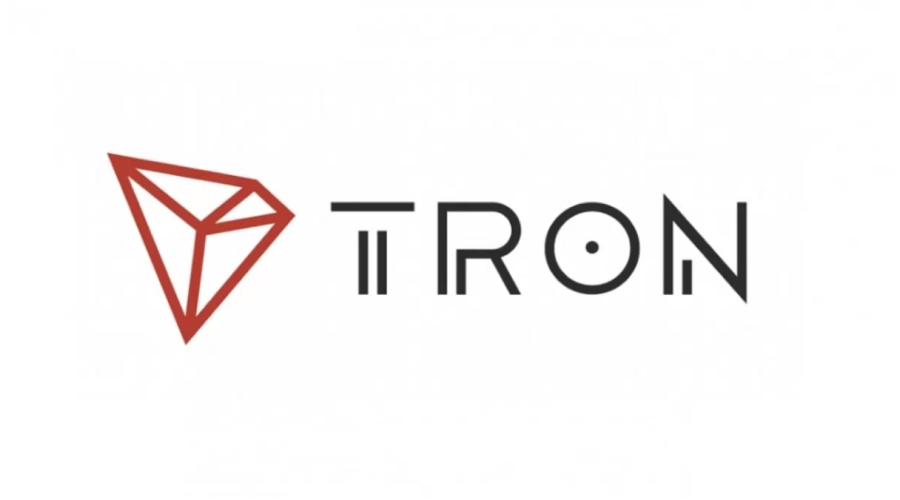
Here are a few of the crucial features of Tron:
- High scalability: Tron is developed to be positively scalable, processing up to 2,000 dealings per second.
- Energy-efficient: Tron uses a unique consensus mechanism called Delegated Proof of Stake (DPoS), designed to be energy-efficient and environmentally friendly.
- Customizability: Tron provides developers with a range of tools and resources to create custom dApps using a variety of programming languages, including Solidity and Java.
- Interoperability: Tron is designed to be interoperable with other blockchain platforms and systems, which makes it easy to integrate with existing infrastructure.
- Decentralized storage: Tron provides decentralized storage solutions, meaning that dApp developers can store their data on the blockchain rather than relying on centralized servers.
- Reward system: Tron’s unique reward system incentivizes users to contribute to the network by rewarding them with TRX tokens.
- Business-focused: Tron is specifically designed for business and enterprise applications, focusing on providing secure, efficient, and scalable solutions for complex business processes.
- Community-driven development: Tron is an open-source project driven by a vibrant community of developers, users, and contributors. This means it constantly evolves and improves, regularly adding new features and functionality.
Overall, Tron is a top blockchain platform offering various features and capabilities for building fast, secure, scalable decentralized applications. With its high scalability, energy efficiency, customizability, decentralized storage, reward system, and focus on business and enterprise applications, it is well-suited for various use cases and applications in multiple industries, including finance, gaming, and more.
9. Hedera Hashpraph
Hedera Hashgraph is a blockchain-based platform that supplies a decentralized, fast, and safe platform for developing and operating independent applications.

Here are a few of the crucial features of Hedera Hashgraph:
- High performance: Hedera Hashgraph is designed to be highly performant, with the ability to process up to 10,000 transactions per second.
- Energy-efficient: Hedera Hashgraph uses a unique consensus mechanism called the Hashgraph Consensus Algorithm, designed to be energy-efficient and environmentally friendly.
- Fast transaction confirmation: Hedera Hashgraph provides quick transaction verification spans, with transactions approved in only a few seconds.
- Decentralized governance: Hedera Hashgraph has a decentralized governance model, meaning critical platform decisions are made through democratic voting.
- Interoperability: Hedera Hashgraph is designed to be interoperable with other blockchain platforms and systems, making integrating with existing infrastructure easy.
- Secure: Hedera Hashgraph is designed to be safe and resistant to attacks, with various efforts to safeguard against phishing and other cyber threats.
- Low fees: Hedera Hashgraph charges low fees for transactions, making it an affordable option for businesses and developers.
- Business-focused: Hedera Hashgraph is specifically designed for business and enterprise applications, focusing on providing secure, efficient, and scalable solutions for complex business processes.
Hedera Hashgraph is a strong and adjustable blockchain platform that offers a range of features and capabilities for building fast, secure, and scalable decentralized applications. With its high performance, energy efficiency, fast transaction confirmation, decentralized governance, interoperability, security, low fees, and focus on business and enterprise applications, it is well-suited for a wide range of use cases and applications in various industries, including finance, supply chain management, and more.
10. Ethereum
Ethereum is a blockchain-based forum that provides a decentralized, programmable system for creating and installing decentralized applications.

Here are a few of the crucial features of Ethereum:
- Smart contracts: Ethereum lets creators make smart contracts, self-driven contracts that automatically enforce the rules and regulations encoded within them.
- Turing-complete programming language: Ethereum uses a programming language called Solidity, which is Turing-complete and allows for the creation of complex and sophisticated smart contracts.
- Decentralized applications: Ethereum allows developers to create decentralized applications (dApps) that can run on the blockchain, providing a range of benefits such as transparency, security, and immutability.
- Interoperability: Ethereum is designed to be interoperable with other blockchain platforms and systems, which makes it easy to integrate with existing infrastructure.
- High scalability: Ethereum is working on scaling solutions such as Ethereum 2.0, which is expected to improve the platform’s scalability and transaction throughput significantly.
- Community-driven development: Ethereum is an open-source project driven by a vibrant community of developers, users, and contributors. This means it constantly evolves and improves, regularly adding new features and functionality.
- Decentralized governance: Ethereum has a decentralized governance model, meaning critical platform decisions are made through democratic voting.
- ICOs and tokens: Ethereum allows developers to create and launch their cryptocurrencies and tokens using the ERC-20 standard, which has led to a proliferation of new projects and applications built on the platform.
Ethereum is a top blockchain platform that offers a range of features and capabilities for building fast, secure, and scalable decentralized applications. Its support for smart contracts, decentralized applications, interoperability, high scalability, community-driven development, decentralized governance, and ICOs and tokens is well-suited for various use cases and applications in multiple industries, including finance, gaming, and more.
Conclusion
the blockchain industry is rapidly developing, and new platforms are continuously appearing. Each forum has unique strengths and weaknesses; the key to success is finding the one that best fits your business needs. In 2025, some top blockchain platforms include Ethereum, Hyperledger Fabric, Corda, Tezos, Hedera Hashgraph, and more.
These platforms offer a range of features and functionalities, such as smart contract capabilities, scalability, security, interoperability, and more. By carefully evaluating your business requirements and selecting the right platform, you can unlock the power of blockchain technology and build innovative decentralized applications that can transform your business and industry. We expect this article on the top 10 blockchain platforms for 2025 to be helpful to the readers.





